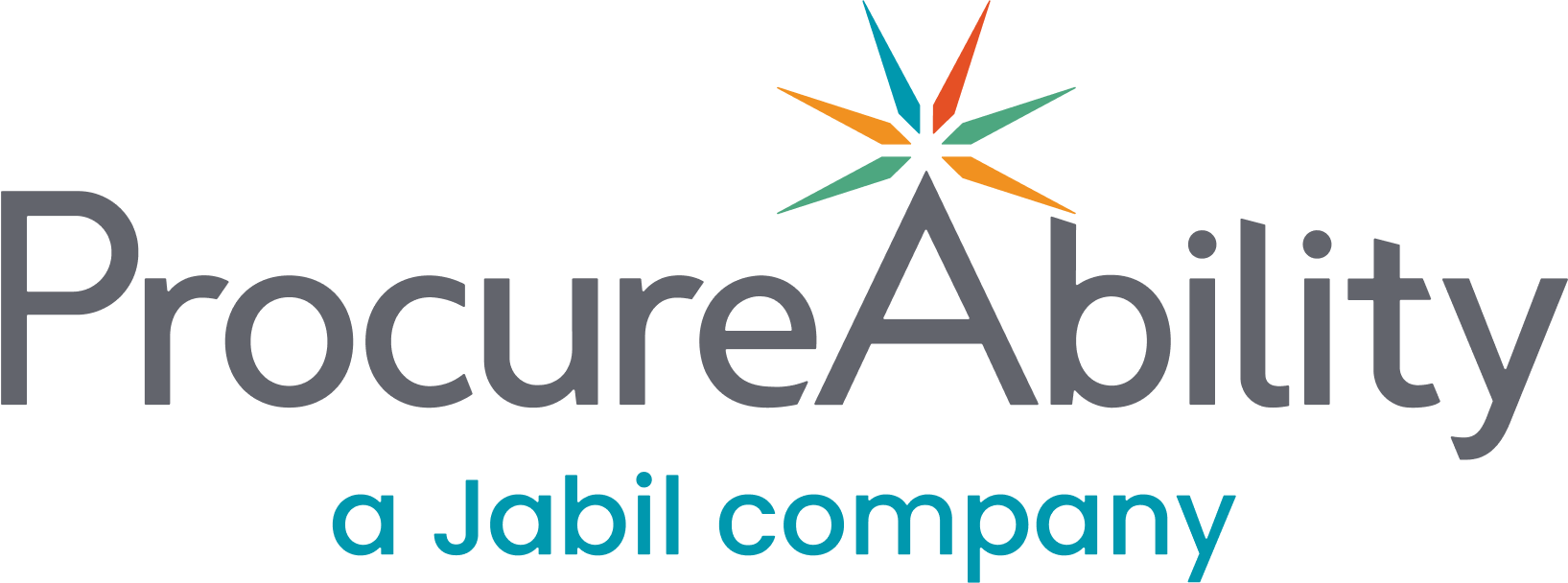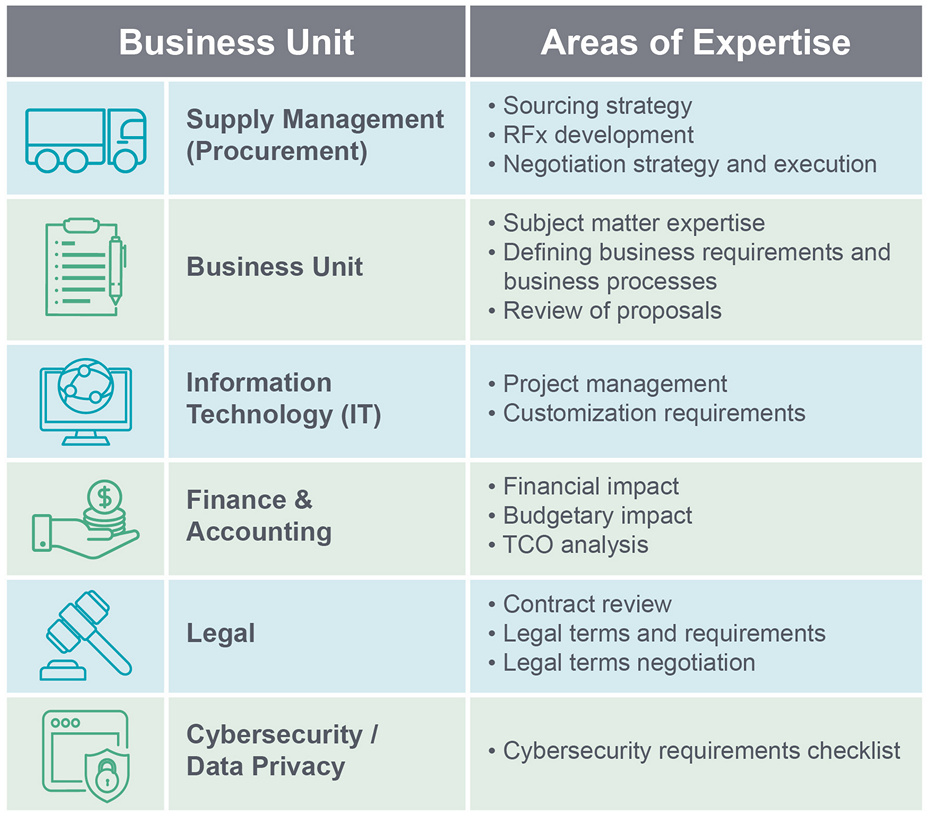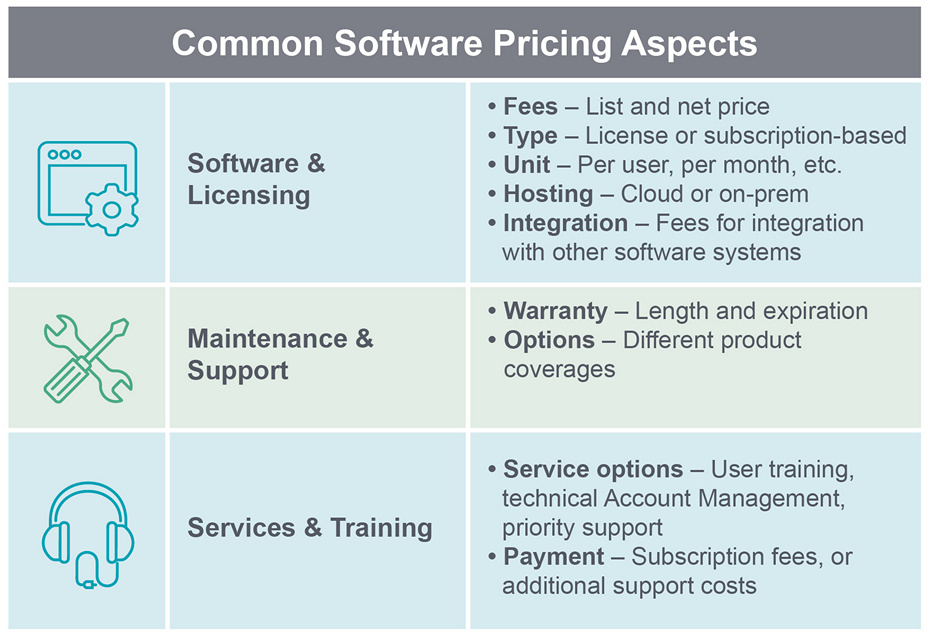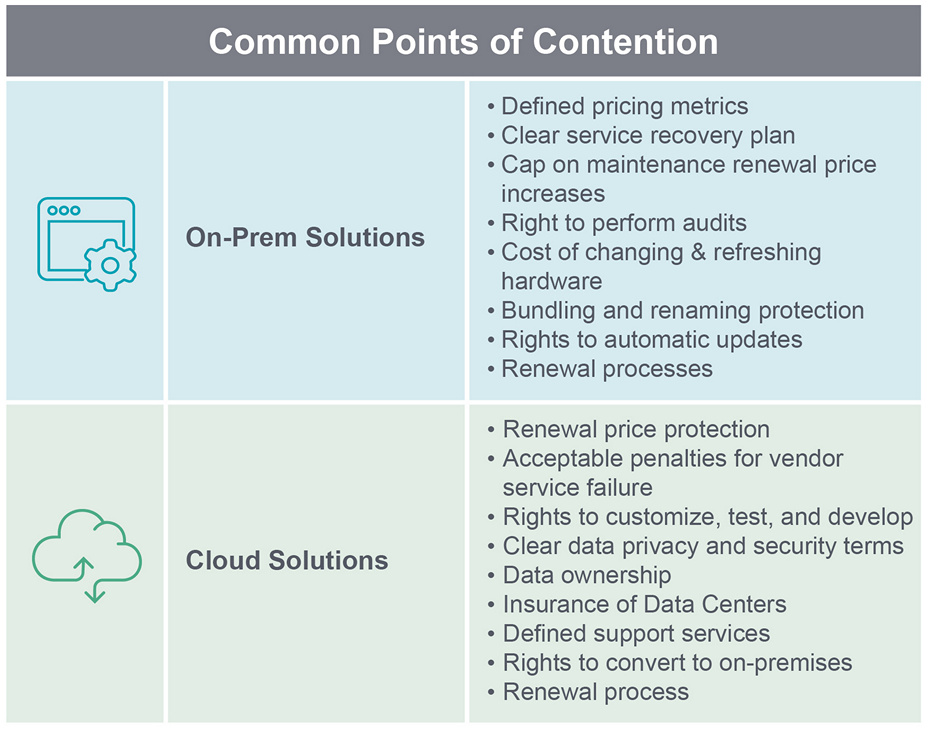As 2021 comes to a close and the focus shifts to the coming new year, your organization may be setting its sights on new large-scale software systems. Whether you are upgrading a legacy system or considering a new one altogether, this is an important decision with long term strategic implications for your company. Having a bullet-proof sourcing strategy is imperative to ensure a successful negotiation, implementation, and long-term adoption of an enterprise software system (ERP, CRM, HCM).
In this blog, we will lay out our best practices for how to source and negotiate enterprise software agreements with confidence.
Best Practice #1: Don’t Go at it Alone
A defining feature of enterprise software is that it will affect an entire organization or business unit. Make sure you assemble a team internally to provide different perspectives for input and to assist in your negotiation strategy.
Below is a reference table for perspectives and job functions that different levels of your company may provide:
Best Practice #2: Prepare a Thorough RFP
When considering new software, developing a Request for Proposal (RFP) is always recommended, even if upgrading a legacy system. In this step, your team will identify your needs and requirements, which in turn will help you better understand your priorities in the purchase.
Take the time to: survey your team, identify all your requirements and to ask vendors how they meet those requirements. From there, your team will be well equipped to analyze vendor responses and to compare: functionality, implementation methodology and lead times, cost and the applicability of the software to your industry. Upon reviewing qualified proposals, vendors conduct software demonstrations to address: issues or concerns you may have, functionality gaps and how the vendor will overcome those gaps.
A well designed and organized RFP process will help you focus your software vendor selection process and ensure you move forward with the best solution for your company.
Best Practice #3: Understand your Fees and Hidden Costs
It’s highly likely that you will end up having to pay more than the price listed on a software company’s website, and even initial proposals may not list every fee that could be coming your way.
When negotiating with a software vendor, do the research to assess the total cost, considering several aspects:
Additionally, understand the different pricing metrics companies use to determine how much you will be charged for their solution. Typically, the solution will fall under one of these models:
- Size-Based – How big your company is
- Ex. Total revenue or total employee headcount
- Transaction-Based – How often the solution is expected to be utilized
- Ex. The volume of order fulfillments or the number of pay periods
- Outcome-Based – How much a solution is likely to achieve for a company
- Ex. Percent of cost savings or percent increase in qualified leads
Best Practice # 4: Don’t Be Bullied with Terms & Conditions
Software companies are notorious for insisting on their own (self-serving) terms & conditions when negotiating with new customers. To ensure your needs are met, it is best to prepare key areas where you may need to negotiate.
Here are common points of contention with software companies to consider:
Best Practices #5: Don’t Box Yourself in to One Supplier
Through the RFP process, you will come to a point where you narrow the potential vendors down to two finalists. It may be to your benefit to negotiate with both vendors until you have reached a deal.
Different vendors will prioritize different negotiation points and be willing to concede on different items in a contract. By having options (and making both vendors aware of your options) you increase your leverage and ability to negotiate a favorable deal.
If your team determines that requirements just cannot be met within the negotiating process, do not be afraid to walk away. If you do walk away from negotiations, meet with the team to: reframe expectations, strengthen negotiation tactics and to determine whether the next-best software option is a realistic candidate.
Conclusion:
Considering these five best practices and putting in the person-hours ahead of time will allow you to confidently source and negotiate your next enterprise-level software deal like a pro and make you a hero for your business. With a competitive marketplace and new solutions emerging every year, be strategic in your negotiating process.
Leverage our IT sourcing experts for your next major software purchase. Connect Today!
